Research Sites
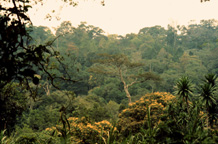
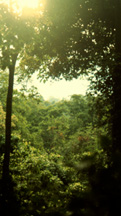
VEGETATION
TYPES

SPECIES
PRESENT
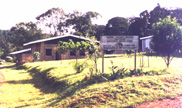
STATION
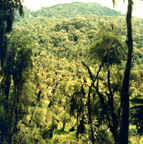

VEGETATION
TYPES
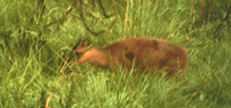
SPECIES
PRESENT
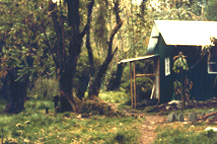
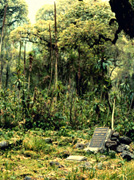
STATION
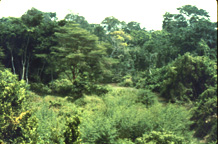
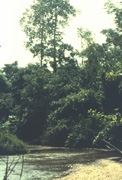
VEGETATION
TYPES
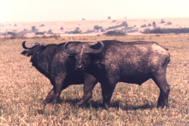
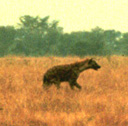
SPECIES
PRESENT
STATION
| East African Research Sites | ||
|---|---|---|
| The primates featured in the African Primates at Home home page were photographed/recorded by Dr. M.K. Holder during the course of field research in Rwanda, Uganda, and Zaïre [now the Democratic Republic of the Congo]. All research is made possible only with permissions from the governments of host countries and is conducted in cooperation with respective parks management personnel. | ||
| UGANDA | Kibale Forest Nat'l. Park | |
| (Toro District, Western Uganda) | ||
| LOCATION | 24 km east of the snow-capped Ruwenzori Mountains (a.k.a. The Mountains of the Moon), 10 km south of the town of Fort Portal, Toro District, Western UGANDA | |
| COORDINATES | From 0° 13´ to 0° 41´ N and 30° 19´ to 30° 32´ E | |
| STATUS | Recently upgraded from a Forest Reserve to National Park status | |
| ALTITUDE | From 1,590m in the north to 1,110m in the south | |
| LANGUAGES | Official: English. Toro District: Rutoro. | |
  | ||
| TYPICAL VEGETATION TYPES | Kibale is a moist, mid-altitude tropical forest, comprised of a mosiac of vegetation types, which vary with the topography and altitude. This includes areas of permanent swamps (primarily Cyperus papyrus), and around Ngogo, some hilltop-grassland (Pennisetum purpuresum). Around Kanyawara Parinari excelsa is typical, while at the lower elevation around Ngogo Pterygota mildbraedii and Chrysophyllum albidum are common. Several species of figs are among the fruit eaten by primates. | |
 | ||
| OTHER SPECIES PRESENT | Eleven species of primates live sympatrically in Kibale, including species of nocturnal prosimians, several monkey species, chimpanzees, and baboons. Other wildlife at Kanyawara include hundreds of avian species, forest elephant, duikers, giant forest hog, golden cat, civit, genets, mongoose, squirrels, snakes, and rodents, and, rarely, leopards. | |
 | ||
| FIELD STATION |
Makerere University Biological Field Station (MUBFS) | |
| RWANDA | Parc National des Volcans | |
| (Northeastern Rwanda) | ||
| LOCATION | Northeastern Rwanda, along the Virunga volcanos, north of the town of Ruhengeri, ajacent to the international frontiers of Uganda and Zaïre [now the Democratic Republic of the Congo]. | |
| COORDINATES | Approximately 1° 30´ S and 29° 30´ E | |
| STATUS | National Park, under intense pressure from nearby Rwandan refugee camps. The international borders of Rwanda, Uganda, and Zaïre lie across these peaks, with their respective national parks adjoining. This area is the last remaining sanctuary for the endangered mountain gorillas (Gorilla g. beringei). Unfortunately, the recent civil war in Rwanda has taken it's toll on the park. Increased hunting within the park has virtually wiped out the ungulate populations, and removal of tons of firewood is weakening this ecosystem. | |
| ALTITUDE | A chain of 8 volcanos forms the Virunga mountains, ranging in altitude from 3,056m (10,023 ft) to 4,507 m (14,792 ft). Two of the volcanos in Zaïre are active (Mt. Nyiragongo and Mt. Nyamuragira); the remaining 6 volcanos, shared by the 3 countries, are inactive. | |
| LANGUAGES | Official: French. Local: Kinyarwanda, Ki-Swahili. | |
  | ||
| TYPICAL VEGETATION TYPES | George Schaller identified ten distinct vegetation zones following including: dry colonizing woodland (6800-7300 ft), bamboo zone (7300-9200 ft), mountain woodland along canyons (7400-11500 ft), Hagenia woodland (9200-11000 ft), Hypericum woodland (11000-11400 ft), tree heath (10000-11500 ft), short grass meadow (about 10000 ft), long grass meadow (11400 ft) giant senecio (11300-14000 ft) and alpine zone (over 14000 ft). Vegetation commonly eaten by the vegetarian gorillas include: celery (Peucedanum linderi), nettle (Laportea alatipes), and galium vine (Galium ruwenzoriensis). | |
 | ||
| OTHER SPECIES PRESENT | Many avian species, tree hyrax, duikers, golden cats, civits, genet, mongoose, squirrel, dormouse, African buffalo, bushbuck, sitatungu, waterbuck, bushpig, warthog, giant forest hog, leopard, and spotted hyena. | |
  | ||
| FIELD STATION |
Karisoke Research Center (DFGF), established in the 1960s by the late Dian Fossey, lies in a saddleback between Mt. Karisimbi (4507m/14,792 ft) and Mt. Visoke (3711m/12,175 ft), at around 3000m (10,000 ft) elevation. | |
| ZAÏRE | Parc National des Virunga | |
| (Eastern Zaïre) | ||
| LOCATION | The Ishasha River lies south of (and drains north into) Lake Rutanzige (ex-Lake Edward, ex-Lake Idi Amin Dada) along the eastern frontier of Zaïre (the river makes up the international border between Zaïre and Uganda). On the Uganda side of the Ishasha River lies the Rwenzori National Park. [Note: As of May 1997, Zaïre is now recognized as The Democratic Republic of the Congo.] | |
| COORDINATES | Approximately 0° 37´ S and 29° 39´ E | |
| STATUS | National Park, under intense pressure from nearby Rwandan refugee camps | |
| ALTITUDE | Elevation of Lake Rutanzige is 916m; the elevation along the river itself is slightly higher, with escarpment plateaus rising up from the floodplain. | |
| LANGUAGES | Official: French. Local: Ki-Swahili. | |
  | ||
| TYPICAL VEGETATION TYPES | The Ishasha River supports a narrow strip of riverine gallery forest running through a semi-arid region of savanna floodplain and plateau. The area on either side of the riverine forest supports a mosaic of vegetation types in the savanah, from grasses (Imperata cylindrica, Themeda triandra, Sporobolus pyramidalis, and Hyparrhenia spp.) to clumps of shrubs or thorn thickets (Capparis tomentosa, Grewia similis, and Flueggia(syn. Securinega) virosa), to several species of the thorny acacia tree (Acacia sieberiana, A.gerrardii, and Euphorbia calycina). Between the open grassland and the tiny emergent gallery forest lies an area of "Dry Forest" (or scelerophyllous forest); this includes small tree species such as Euclea schimperi, Erythroxylum fischeri, and Turraea robusta. Common emergents dominating the upper canopy of the riverine gallery forest include Cynometra alexandrii, Pterygota mildraedii, and Chrysophyllum albidum. For additional information on this site, see Jeanne Sept's Home Page | |
  | ||
| OTHER SPECIES PRESENT | In addition to a small community of chimpanzees are anubis baboons, black and white colobus, vervets, buffalo, warthog, Ugandan kob, hyena, hippopotamus, and lion. The intense demands of the nearby Rwandan refugee camps has resulted in a great loss of the ungulate population, as well as the loss of tons of firewood from the Parc. | |
| FIELD STATION |
Institut Zaïrois pour la Conservation de la Nature (IZCN) - Lulimbi Research Station | |
| RESEARCH PERMISSIONS |
All research is made possible only with permissions from the governments of host countries and is conducted in cooperation with respective parks management personnel. To all these, and my colleagues abroad, I am most grateful -- merci beaucoup, webale muno, murakozi, asante sana. |
|---|---|
| RESEARCH FUNDING |
The Boise Fund, U.K. Sigma Xi |
| CONFERENCE TRAVEL SUPPORT | Rutgers University, NJ, USA
and the Center for the Integrative Study of Animal Behavior (CISAB) at Indiana University, IN, USA |
| Don't stop now... | |
|---|---|
| PARTICIPATE
in HUMAN PRIMATE RESEARCH! | |
| |
| Mk's INFOSAFARI
SHAMBA contains my Curriculum vitae and other stuff | |
| Learn about PRIMATE HANDEDNESS and BRAIN LATERALIZATION |
| GO TO |
|
|
|
|
|
|
|
|
|---|
| contact information | ||
| Photos © 1990, 1993, 2005 M.K. Holder |
PHOTOS MAY NOT BE USED
WITHOUT PRIOR WRITTEN PERMISSION.
NOTE: I do not have time to reply to individual e-mails about homework | |